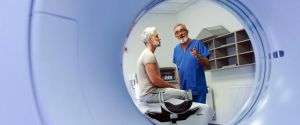Artificial intelligence (AI) has significantly advanced radiology, transforming the speed and precision with which incidental findings such as nodules, masses, and vascular irregularities are detected. AI-driven tools enhance diagnostic accuracy, notably in lung cancer screening and breast imaging, where research demonstrates reductions in false positives and unnecessary biopsies when effectively calibrated (Megat, et al., 2025) (Chang, et al., 2025) .
While the integration of AI into radiology has greatly enhanced the ability to detect subtle or incidental findings with greater speed and accuracy, it has also introduced new complexities into clinical practice. As these tools increase both the number and precision of findings flagged for follow-up, the volume of downstream recommendations will surge. This influx can quickly outpace the capacity of current staff and systems to manage them effectively. Without dedicated infrastructure or automation to support follow-ups at scale, many health systems will struggle to keep up—or worse—will elect not to turn on detection capabilities for fear of increased risk and liability.
AI Detection’s Impact on Follow-up Care
A surge in AI-identified radiological findings will strain existing healthcare workflows. Healthcare providers face heightened responsibilities, including notifiying patients, scheduling follow-up imaging, coordinating specialist referrals, and managing patient communications. When follow-up processes are inadequately managed—due to staffing shortages, inefficient communication systems, or procedural oversights—the repercussions can be severe.
Low Follow-Up Rates and Delayed Diagnoses: Without a tracking system, many radiology follow-up recommendations are not completed. For example, baseline completion rates for recommended follow-up imaging can be as low as 43% before any intervention, and in emergency departments, follow-up for incidental findings occurs in only about 17% of cases (Wandtke & Gallagher, 2017). This leads to delays in diagnosing serious conditions, including malignancies, which can reduce treatment options and worsen patient outcomes.
Patient Harm and Missed Care Opportunities: Failure to track and act on follow-up recommendations increases the risk that patients with potentially serious findings will be lost to follow-up. This can result in progression of disease to untreatable stages, avoidable complications, and preventable harm.
Increased Malpractice Risk: Missed or delayed follow-up is a recognized cause of preventable medical errors and is commonly cited in malpractice claims involving radiologists and referring providers. The lack of a reliable system to close the follow-up loop exposes hospitals to significant legal and financial risk.
Lost Revenue: Missed follow-up imaging not only harms patients but also represents lost revenue for hospitals. Inflo Health clients have consistently demonstrated that completed follow-up examinations generate revenue that can far exceed the cost of implementing a tracking system.
Communication Breakdowns: Hospitals without integrated follow-up management face challenges in communicating recommendations across disparate electronic medical record (EMR) systems, especially in community settings with private practices. This fragmentation increases the likelihood that important findings are not acted upon.
No Accountability or Process Improvement: Without a follow-up system in place, hospitals cannot reliably measure or improve adherence to follow-up recommendations, missing opportunities to standardize care, identify gaps, and implement quality improvement initiatives.
The Limitations of AI Detection Alone and The Promise of High-Reliability Follow-up
The effectiveness of AI in clinical radiology settings is critically dependent on the supporting infrastructure. Detection alone does not ensure improved patient outcomes; rather, it is the comprehensive management of identified findings that determines the clinical benefit.
To maximize the clinical value of AI, integrated follow-up solutions must systematically ensure that flagged findings result in appropriate and timely action. AI’s diagnostic reliability significantly improves when paired with structured, automated follow-up systems capable of coordinating care, managing patient communication, and tracking clinical tasks through completion.
The Take Away
While AI detection in radiology offers substantial benefits, its efficacy and safety critically depend on a robust and structured follow-up solution that effectively bridge the gap between detection and clinical action. Future research should continue focusing on high-reliability follow-up to ensure AI technology enhances rather than complicates radiological practices.
References
Chang, YW., Ryu, J.K., An, J.K. et al. Artificial intelligence for breast cancer screening in mammography (AI-STREAM): preliminary analysis of a prospective multicenter cohort study. Nat Commun 16, 2248 (2025). https://doi.org/10.1038/s41467-025-57469-3
Megat Ramli PN, Aizuddin AN, Ahmad N, Abdul Hamid Z, Ismail KI. A Systematic Review: The Role of Artificial Intelligence in Lung Cancer Screening in Detecting Lung Nodules on Chest X-Rays. Diagnostics (Basel). 2025 Jan 22;15(3):246. doi: 10.3390/diagnostics15030246. PMID: 39941176; PMCID: PMC11817343.
Northwestern Memorial Hospital. (2022, March 16). Using artificial intelligence to solve one of health care’s most enduring problems. Northwestern Medicine News. https://news.nm.org/using-artificial-intelligence-to-solve-one-of-health-cares-most-enduring-problems/
Wandtke, B. & Gallagher S. (2017) Reducing delay in diagnosis: Multistage recommendation tracking. American Journal of Roentgenology, 209(5), 984–991. https://doi.org/10.2214/AJR.17.18332












